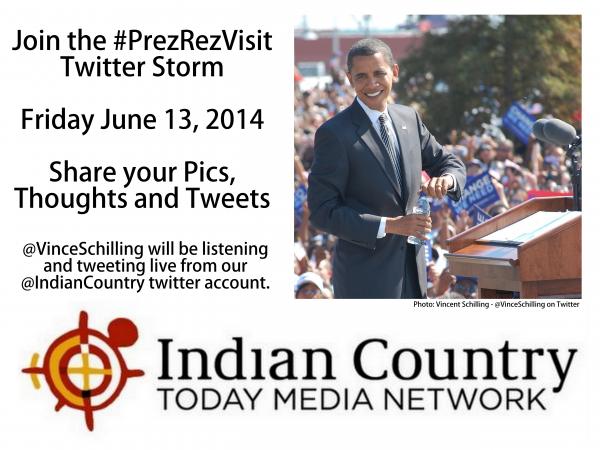Tag: Indian country
Leaving a legacy
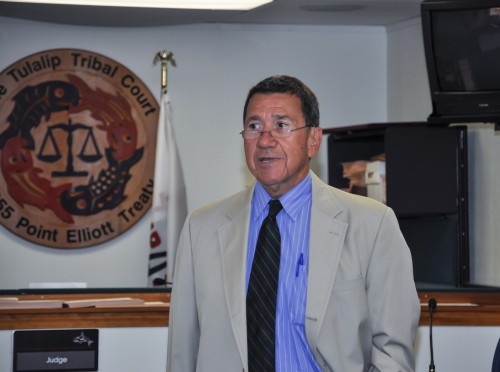
Photo/ Brandi N. Montreuil, Tulalip News
Judge Gary Bass discusses his career at Tulalip Tribal Court
By Brandi N. Montreuil, Tulalip News
TULALIP – Honorable Judge Gary Bass, a Colville tribal citizen, has been a staple at the Tulalip Tribal Court for over a decade. He has witnessed the growth in staff, programs, and the selection of the court as one of three chosen as a pilot project to exercise special criminal jurisdiction as authorized by the Violence Against Women Reauthorization Act of 2013 over non-Indians regarding domestic violence.
Recently Judge Bass received a lifetime achievement award from the Northwest Indian Bar Association in recognition for his long-term work in Indian country. The award recognizes his 49 years of law practice and work with Native communities. Tulalip News /See-Yaht-Sub was able to sit down with Judge Bass and discuss his work in Indian country and his retirement from Tulalip Tribal Court at the end of this year.
The decision to practice law
“I was a young officer in the Army, and when you are a young officer, people that are up for special courts marshals can request that they have an officer, even though they are not a lawyer, represent them. I did that a few times and I really enjoyed it. I had never thought about being a lawyer until that time. I had an old lieutenant colonel that was my regimental commander, I went to him and said, ‘you know, I am thinking about staying in the Army or I am going to law school.’ He said, go to law school. I never knew if that was a result of him thinking I was a lousy solider or he thought law school would be a better fit for me.”
The change from lawyer to judge
“I was in King County and I had a large practice. One of the court commissioners there asked if I would like to come and sit, as what they call a pro tem judge, in King County Superior Court on ex parte, and I said yes. I did that for 20 years, two to four days a month, and that was really the start of me being a judge. The reason I came here to Tulalip is because Mike Taylor called me, and said, ‘gee you know anybody that would like to come up here and sit as the criminal court judge three days a week?’ At that time I was thinking about going semi-retired, but I said, well sure. It was three days a week but immediately it became full time, and of course I have been here ever since. It has been a great ride. I have really enjoyed it. I had never thought about becoming a tribal court judge until Mike brought the issue up. It was a better fit than being in the Superior Court because I probably would have been appointed to the Superior Court as a minority candidate, but I didn’t really want to do that. So this was the best thing that could have happened to me.”
Life at Tulalip Tribal Court
“At Tulalip Tribal Court we hear all kinds of cases. Everything you can think of, from child custody to youth-in-need-of-care cases to criminal and so forth. Our days are really pretty busy. We have ex parte that we have two times a week, where we sign orders for people that need to get orders signed for default divorces, guardianships, probates, restraining orders for domestic violence cases, and minor settlement, and once a week I have the domestic violence staff-in meeting. It gets busy.”
Law in Indian Country, what makes it so different
“Tulalip Chief Judge Theresa Pouley and I are Native Americans, and we look upon the folks that come before us in the courts differently than we would in state courts. In state courts you probably are never going to see the individual in front of you again. Here, we get so that we know all the people that come before us. We know their family and we know all the things about them. Of course we look upon them as judges, but you kind of look at it more as of an elder guide. Their welfare and everyone that comes before us is extremely important to us. It is a different relationship and you get to be a part of the community here.”
“The law is frequently the same, but the things that are different of course are elders are treated with respect. We like to let folks have their say in court, which a lot of times in state courts the things that we allow people to talk about would never ever happen. Native Americans were treated so badly by the courts and justice systems that it is important to us to let them have their say. Some things that are said are not necessarily relevant to the case, but they should be entitled to have their say. As a result, we have a different attitude towards them. We regard everybody here as our brothers and sisters, and we are responsible for trying to solve their problems.”

Photo/ Brandi N. Montreuil, Tulalip News
What Tulalip gave in return
“It has made me more aware of all the problems through the years that Native Americans have had, from generational trauma from sending them to the boarding schools and all the problems that have occurred because of that. It has made me aware of that and given me much more understanding of it, and the way we do things.”
“I was never a pow wow guy. My family lived on the [Colville] reservation and we did all the things that we normally do on the reservation, but we weren’t intimately involved in the cultural aspects of the tribe. So being here has made me more aware and respectful of all the traditions and culture of Native Americans. I have learned a lot that I never knew before. It has really been instructive to me as a Native American. As a judge, it has made me more understanding, and more willing to try to help people. One of the things I have always said is, when we get done, nobody is going to have statues of us like people in Washington D.C. and we are not going to have books written about us; our main legacy is that we have made lives better for our Native American brothers and sisters. That is our legacy and that is what drives me to want to do this.”
The awards
“I received a lifetime achievement award from the Northwest Indian Bar Association. It is recognition for someone’s long-term work they’ve done in Indian Country. At this point I have been working in Indian country, either urban or with tribes, for 48 years, so it is in recognition of that. When I was in Seattle I was very active in the urban Indian community.”
“I also have a plaque from the Martin Dale Hubbell organization, which is a world wide organization that sends out surveys to judges and attorneys to anonymously rate people. This award says I am AV, which means I have the highest ranking in legal and ethical ability that they can give. For me that was a great honor because it is from your peers. “
Accomplishing the task
“I am very satisfied with my career. I don’t think if I had to go back and do it again I would do anything any different. I have been very fortunate in a lot of ways, like coming here, I think that was the best thing that could have happened to me. I never had aspirations for being a Supreme Court judge, I always wanted to be a very good trial lawyer and I think I was. The crowning pinnacle of my career has been here at the Tribal Court, because hopefully I have helped make things better for Tulalip tribal members. The whole Court has contributed to the justice system here and the Tulalip Tribal Court is recognized through the nation as either one of the best or the best tribal courts in the nation. That is a result of the teamwork from the Board of Directors to all the departments, court staff and reservation attorneys. This Tribe should be proud of its court because it truly is one of the best.”
Brandi N. Montreuil: 360-913-5402; bmontreuil@tulalipnews.com
Sen. Heitkamp Reflects on Historic Presidential Visit to North Dakota
In the wake of the historic Presidential visit to Indian country by President Barack Obama and First Lady Michelle Obama, Senator Heidi Heitkamp [D-ND], talked to ICTMN about being the receiving Senator of the day.
Soon after the President and First Lady arrived in North Dakota, Heitkamp joined them on Marine One and made their way to the Standing Rock Sioux celebration in Cannonball where the President and First Lady met with tribal leaders, talked with Native youth and enjoyed a powwow celebration.
Heitkamp also had an opportunity to speak at length with the Obama’s to share her concerns about Indian country and her recent initiatives to include her cosponsored legislation to support Native American language immersion programs and her first Native American Veterans Summit to connect Native vets with resources, support, and benefits.
For more information about Senator Heitkamp, visit www.heitkamp.senate.gov
Last week [week of June 13] was quite a week for Indian country.
The country got some insight into a powwow announcer.
You were the receiving Senator of the President and First Lady. How did that feel?
We shared such a concern for all of these issues. I was proud to show him the great traditions that we have down in Standing Rock. I was proud to be part of the day but this really was about a day for the Standing Rock Sioux Nation.
Yes, I was there and I was given a chance to participate, but what I really appreciated was how respectful they were of tribal sovereignty.
What types of things did you talk about with the President and First Lady – including the issues of course, but anything else?
I spent a lot of time visiting with the President about Native American housing, I think that is one of the critical issues and concerns that we have regarding how we are going to revitalize and improve conditions for Native American people.
I also spoke about the critical need to not only build more housing, but we need to destroy the housing that I think is dangerous to kids, such as houses with black mold. We need to make sure those homes are replaced.
We also spent a lot of time talking about education and the need for nutrition, including some of the work that the First Lady is doing in keeping our kids healthy.
We also gossiped a little bit about the Senate. (laughs)
Can you tell me any gossip? (Laugh in return)
No, I am not telling you that.
Was this the first time you’ve met them both at the same time?
This was the first time they were in North Dakota together, but it was also the first time I have been with the both of them.
It was an impressive day. What was the Presidents take?
If you take a look at where the President’s priorities are as it relates to Native American people, I think you will see a very sincere appreciation for the culture but also to the challenges in understanding the role that the federal government plays in making things better for Indian country.
Considering you are Senator of North Dakota, there is a lot to share about Indian country.
We have five tribes that are my constituents in North Dakota. I have a unique relationship with them. I was just talking about how I used to challenge federal officials to do something to improve the conditions for Native Americans and their families. Now I am in the position where I do not get to ask the questions, I am the one who must answer the questions. Now it is my job.
I come from a long tradition of North Dakota senators who have been champions. Quentin Burdick was beloved in Indian country and North Dakota. His dad Usher Burdick was a congressman who also worked on these issues for years. Sen. Byron Dorgan really picked up the mantle. If you think about what Dorgan is doing now he just does not give up. He is still trying to figure out what we can do and he has been a great help for me.
He was a witness for me on the child commission bill He is still a full partner. You can’t spend time in Indian country and not be motivated to take up the mantle of working with sovereign nations to improve conditions.
You are also an advocate for sustaining Native American languages.
[W]e [recently] had a great hearing on Native languages. A lot of people wonder what the big deal about a Native American language is. But in terms of recovery of the community, so much of Native culture is in their language – There are so many different words for different things which are things we can just take for granted.
The Senate committee on Indian affairs, Maria [Cantwell (D-Wash.)] was a great chair and I think now Sen. Jon tester [(D-Mont.)] will be a great chair, and we’re doing some very important collaboration for Indian country and we are also holding federal officials accountable for the decisions they are making.
In your discussions with the First Lady and the President, I am certain you discussed a lot of issues but did you discuss any possible workable solutions?
I will be talking to Jodi Gillette in the next couple of days as a follow-up to the President’s visit. But I will tell you, as persuasive as I like to believe I might have been in coming up with solutions, I do not think I could match the conversation that the President and First Lady had with six Native American youth who told their stories.
The things that the president is going to remember Is not me yacking on about housing, I think their take away will be those six amazing youth leaders who have had life challenges that most people could only imagine. They experience things that children their age should not have to have been confronted with – whether it be experiences involving suicide, parental addiction or whatever else there was.
I think if you ask the White House what they will remember other than the beauty of the Standing Rock Sioux Nation and the beauty of the people and ceremony – I think they will say they will remember those conversations with the six Native youths.
Considering such a historic day, what was your take on the entire experience?
I will tell you, there are two visual things that I will always have other than the panoramic beauty of what went on there at the Standing Rock powwow.
What I will really remember is a young Native American girl sitting next to Nicole Archambault the chairman’s wife who was literally shaking with excitement. When the president turned and looked at her, she burst into tears.
It was a reminder to me, as the President and First Lady were spending that time there, they were demonstrating: ‘You children are valued and you are important, that is why we’re here.’ You could see that pride in the people that participated.
The second thing I will remember is that I have never seen the President happier or more relaxed. I think those are my two emotional takeaways.
As tough as the conversations with those kids might have been, I think it was a joyful experience because he was seeing the best of their culture. They were not phoning it in, they were not checking a box – they were engaged and committed.
What do you hope will come out of all of this?
I hope what comes out of this will be the continuing of his efforts and improving education. Sally Jewell was there looking at the Cannonball school and I am hoping we can get a new school built. I think this was a stressful day for the President because he was speaking about Iraq on the same day. And with all of the stresses of his day-to-day life, it was nice to see this propelled to the front of his issues. We need to keep it that way.
Read more at http://indiancountrytodaymedianetwork.com/2014/06/24/sen-heitkamp-reflects-historic-presidential-visit-north-dakota-155439?page=0%2C3
Kill the Land, Kill the People: There Are 532 Superfund Sites in Indian Country!
Of a total of 1,322 Superfund sites as of June 5, 2014, nearly 25 percent of them are in Indian country. Manufacturing, mining and extractive industries are responsible for our list of some of the most environmentally devastated places in Indian country, as specified under the Comprehensive Environmental Response, Compensation and Liability Act (CERCLA), the official name of the Superfund law enacted by Congress on December 11, 1980.
Most of these sites are not cleaned up, though not all of the ones listed below are still active. Some sites are capped, sealing up toxics that persist in the environment. In cases like the Navajo, the Akwesasne Mohawk and the Quapaw Tribe, the human health impacts are known because some doctors and scientists took enough interest to do studies in their regions. Some of those impacts may persist through generations given the involvement, as in the case of the Mohawk, of endocrine disrupters. Read on.
1. Salt Chuck Mine, Organized Village of Kasaan, Alaska
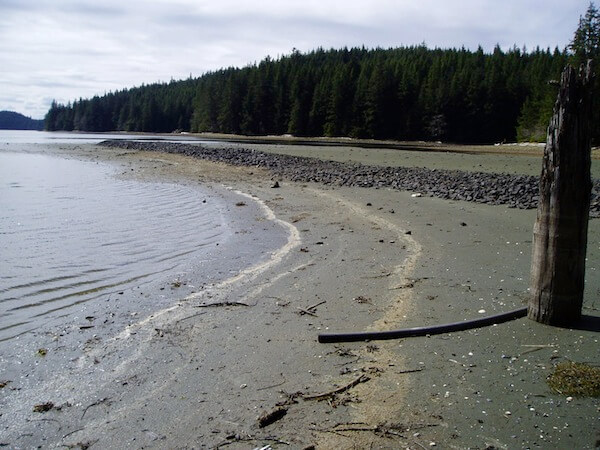
The Salt Chuck Mine Superfund site in southeast Alaska operated as a copper-palladium-gold-silver mine from 1916 to 1941. Members of the Organized Village of Kasaan, a federally recognized tribe, traditionally harvested fish, clams, cockles, crab and shrimp from the waters in and around Salt Chuck, unaware for decades that areas of impact were saturated with tailings from the former mine. As if that weren’t enough, Pure Nickel Inc. holds rights to mining leases in the area and began active exploration to do even more mining in summer 2012, according to Ground Truth Trekking.
2. Sulfur Bank Mine, Elem Band of Pomo Indians, California
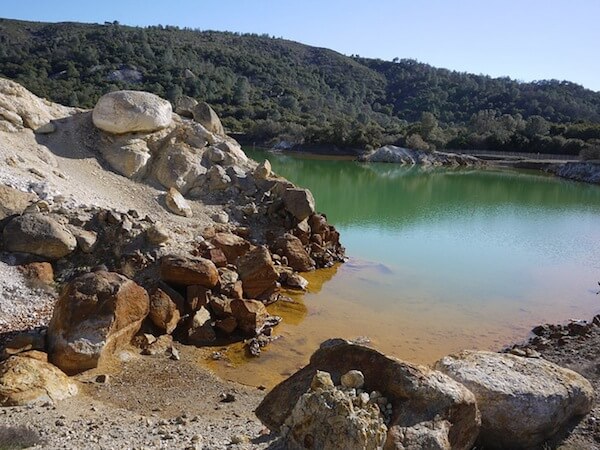
The Elem Band of Pomo Indians, whose colony was built on top of the waste of what would become California’s Sulfur Bank Mine Superfund site in 1970, have elevated levels of mercury in their bodies, and now fear for their health. According to an NBC News investigation, nearby Clear Lake is the most mercury-polluted lake in the world, despite the EPA’s spending about $40 million over two decades trying to keep mercury contamination out of the water. Although the EPA cleaned soil from beneath Pomo homes and roads, pollution still seeps beneath the earthen dam built by the former mine operator, Bradley Mining Co. For years, Bradley Mining has fought the government’s efforts to recoup cleanup costs.
3. Leviathan Mine, Washoe Tribe of Nevada and California
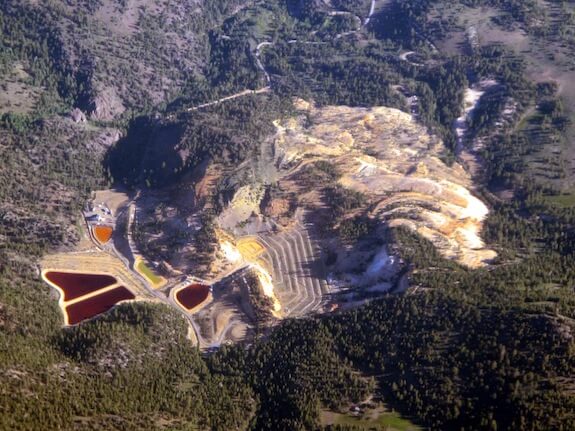
The Washoe Tribe of Nevada and California requested EPA involvement in the cleanup of an abandoned open pit sulfur mine on the eastern slope of California’s Sierra Nevada that became the Leviathan Mine Superfund site. The Washoe Tribe had become concerned that contaminated waters were affecting their lands downstream, causing impacts to culture and health, environmental damage, remediation, monitoring and testing, posting of health advisories, drinking water, effects on pregnancy, and cancer. Aluminum, arsenic, cadmium, iron, manganese, nickel and thallium have been detected in surface water and sediment downstream from the mine. The U.S. Centers for Disease Control and Prevention (CDC) concluded that exposures could result in cancerous and non-cancerous health effects.
4. Eastern Michaud Flats, Shoshone-Bannock Tribes, Idaho
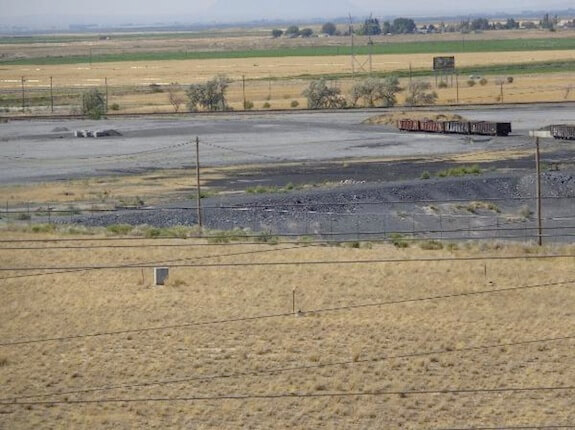
The abandoned FMC phosphorus facility occupies more than 1,000 acres of the Shoshone-Bannock Tribes’ Fort Hall Reservation in Idaho, and lies within Eastern Michaud Flats Superfund site. The primary contaminants of concern at the site are arsenic, elemental phosphorous and gamma radiation. FMC left a legacy of contamination in the air, groundwater, soil and the nearby Portneuf River, which threatened plants, wildlife and human health on the reservation and in surrounding communities. The Shoshone-Bannock have long asked for a cleanup of contaminated soils, but instead the EPA’s 2012 interim remedy is to cap and fill, including areas containing gamma radiation and radionuclides.
5. Bunker Hill Mining and Metallurgical Complex, Coeur d’Alene Tribe, Idaho
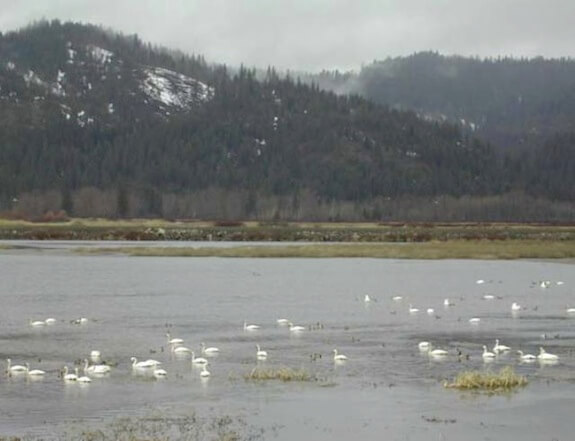
The Bunker Hill Mining and Metallurgical Complex Superfund site, located in the Coeur d’Alene River Basin, is one of the largest environmental and human health cleanup efforts in the country.
Its contamination, the result of decades of mining, milling and smelting, affected more than 150 miles of the river, lake and its tributaries. The area, listed a Superfund site in 1983, is one of the “largest and most complex” in the country, according to the EPA. Studies revealed that three quarters of children living in the area in the 1970s had unhealthy levels of lead in their bloodstream. The United States, the Coeur d’Alene Tribe and the state of Idaho settled with the Hecla Mining Co. in June 2011 for $263.4 million to resolve claims stemming from releases of wastes from its mining operations, an agreement that will protect people’s health by ensuring the cleanup of areas heavily polluted with lead, cadmium, arsenic and other contaminants.
6. Rio Tinto Copper Mine, Shoshone Paiute Tribes of Duck Valley, Nevada
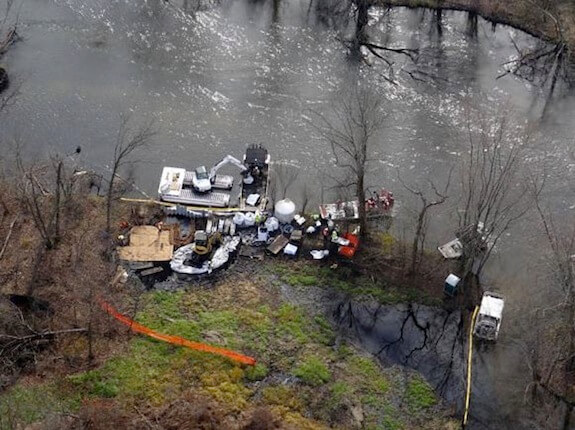
The Shoshone Paiute Tribes of Duck Valley and the state of Nevada will oversee cleanup of the abandoned Rio Tinto Copper Mine Superfund site with $25 million paid by the Atlantic Richfield Co., DuPont and Co., the Cleveland-Cliffs Iron Co. and Teck American Inc., all corporate successors to companies that operated the copper mine between 1932 and 1976. The agreement was worked out last year by the EPA, U.S. Department of Justice (DOJ) and the Nevada Division of Environmental Protection. The cleanup will remove mine tailings from Mill Creek, make the creek habitable for redband trout and improve the water quality of Mill Creek and the East Fork Owyhee River.
7. Alcoa Superfund Site, Akwesasne and Saint Regis Mohawk, New York

The Alcoa Superfund aluminum manufacturing facility in Massena, New York, released hazardous substances including polychlorinated biphenyls (PCBs) onto property and into the Grasse River, contaminating sediments in the river system to approximately seven miles downstream, a traditional area of the Akwesasne Mohawk. Analysis of fish in the Grasse River revealed high levels of PCB contamination. PCBs are linked to cancer, low birth weight and thyroid disease, as well as learning, memory and immune system disorders. When in April 2012 the EPA finalized a cleanup plan that requires dredging and capping of contaminated sediment in a 7.2 mile stretch of the river in April 2012, the Saint Regis Mohawk Tribe were not satisfied with the capping solution.
8. General Motors Massena, Akwesasne Mohawk
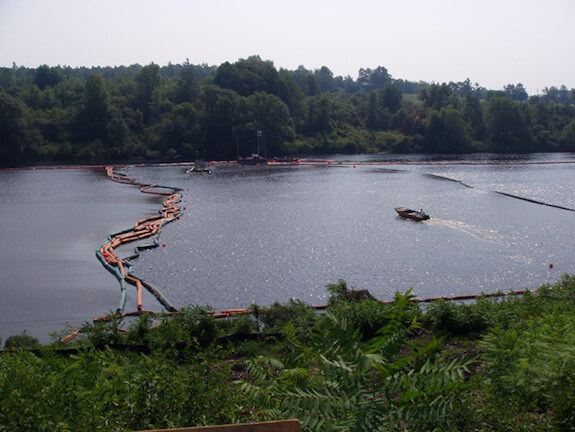
Some 4,000 Saint Regis Mohawks live adjacent to the General Motors Massena Superfund site in Massena, New York, which while in operation used PCBs, plus generated and disposed of various industrial wastes onsite. PCBs have been found in the groundwater, on- and off-site soils and sediments in the St. Lawrence and Raquette Rivers, Turtle Cove and Turtle Creek. PCBs are probable human carcinogens that can also affect the immune, reproductive, nervous and endocrine systems, as well as cause other health effects. Groundwater was also found to be contaminated with volatile organic compounds (VOCs), which are potentially harmful substances that easily evaporate in the air. Phenols have been detected in lagoons left behind.
Under an August 2010 EPA order, Motors Liquidation Co., formerly GM, and then RACER Trust became responsible for additional sampling, decontamination of the building and contents, demolition of the building, removal of PCB-contaminated soil beneath the building and restoration of the area. A controversial landfill of capped contamination will be moved 150 feet from the tribal border in 2014, EPA regional administrator Judith Enck told the Associated Press in 2012.
The bodies of young Akwesasne Mohawk adults contain twice the levels of PCBs as the national average, compared to those studied by the CDC. Researchers have already established that PCBs have altered thyroid gland function in the Akwesasne community. Prior studies found lower testosterone levels and established links to autoimmune disorders.
“Endocrine disruption seems to be the effect which is most far reaching, because other effects on the reproductive system may be well tied into that,” said Lawrence Schell, a professor at the State University of New York (SUNY at Albany) and director of its Center for the Elimination of Minority Health Disparities who was involved in an exposure research study at the St. Regis Mohawk Nation.
9. Onondaga Lake, Onondaga Nation, New York
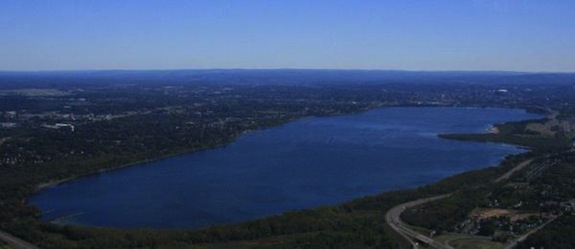
Onondaga Lake is a sacred place. The Great Peacemaker formed the Haudenosaunee, known as the Iroquois Confederacy, on its shores.
That the 4.5 square mile lake in Syracuse, New York is spoiled is a painful thing. Sewage overflows contaminated the lake over the years, as did industrial pollutants and heavy metals such as PCBs, pesticides, benzene, toluene, xylene, creosotes and polycyclic aromatic hydrocarbons (PAHs), lead, cobalt, and mercury. The Onondaga Lake Superfund site, listed in 1994, consists of the lake itself and seven major and minor tributaries. Completion of the dredging work is being performed by Honeywell International with oversight by the New York State Department of Environmental Conservation, the EPA and the New York State Department of Health, and capping is expected in 2016. The Onondaga Nation states the Honeywell cleanup plan does not effectively contain toxic chemicals and heavy metals that will be left beneath caps in the lake-bottom sediments.
“Caps are not a reliable form of containment—they will fail, and whether it is in 10 years or 110 years, it is only a matter of time,” the Onondaga said in a statement. “And when that happens, the chemicals will be re-released into the ecosystem.”
Nor does the plan set any goals for making the lake ‘swimmable’ or ‘fishable’ they say—a requirement under the Clean Water Act, the Onondaga added.
10. Tar Creek, Quapaw Tribe
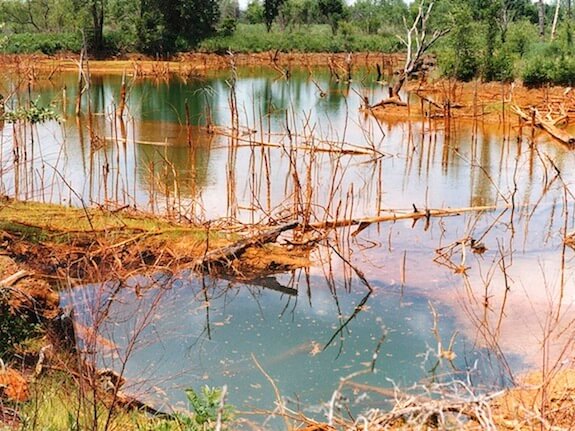
Picher, Oklahoma, part of the Quapaw’s tribal jurisdictional area, was home to productive zinc and lead mining until 1967, when mining companies abandoned 14,000 mine shafts, 70 million tons of lead-laced tailings, 36 million tons of mill sand and sludge and contaminated water, leaving residents with high lead levels in blood and tissues. The area was declared the Tar Creek Superfund site in 1983, but Picher was deemed too toxic to clean up after a 1993 study found that 34 percent of the children tested in Picher had blood lead levels exceeding the point at which there is a risk of brain or nervous system damage. Cancers skyrocketed. A federal buyout paid people to leave. The Quapaw Tribe has cleaned up part of the Tar Creek Superfund site known as the Catholic Forty and has signed agreements to clean up two other sections of the contamination. Their goal is to make the land productive again.
11. Midnite Mine, Spokane Indian Reservation, Washington
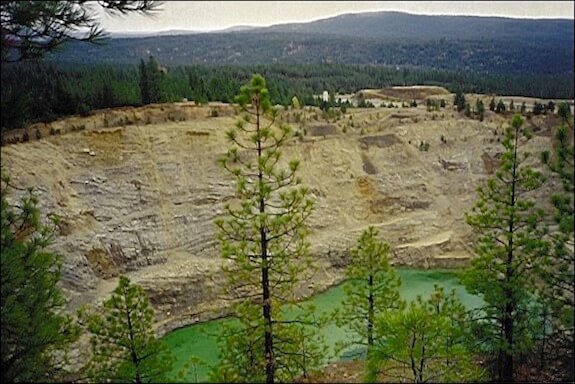
The 350-acre Midnite Mine Superfund site on the Spokane Indian Reservation in eastern Washington is centered around a former open pit uranium mine that poses a threat to human health due to elevated levels of radioactivity and the presence of heavy metals. Years of digging for uranium from 1954 to 1964, and again from 1969 to 1981, have disturbed 350 acres, left two open mine pits and piles of toxic rock on the landscape. Under a September 2011 agreement, Newmont USA Limited and Dawn Mining Company LLC would design, construct and implement the cleanup plan for the site that EPA selected in 2006. They will also reimburse EPA’s costs for overseeing the work. The United States will contribute a share of the cleanup costs. EPA will oversee the cleanup work in coordination with the Spokane Tribe. Cleanup is expected to cost $193 million.
12-532. Uranium Mining, Navajo Nation
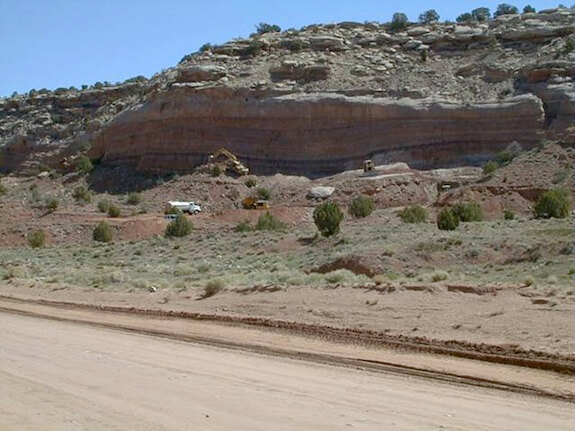
The legacy of uranium mining on the Navajo Nation is radioactive uranium contamination from 521 abandoned Superfund mine sites spread over 27,000 acres of Nevada, New Mexico and Arizona in the Four Corners area, leaving many homes and drinking water sources on the reservation with elevated levels of radiation. The health effects to Navajo citizens include lung cancer from inhalation of radioactive particles, bone cancer and impaired kidney function from exposure to radionuclides in drinking water. The EPA has completed on-the-ground screening of the mine sites, and with the Navajo EPA is determining the order of site cleanup. Cleanup of some sites has begun while the US EPA continues to research and identify Potentially Responsible Parties under Superfund laws to contribute to cleanup costs.
On the Heels of Historic Presidential Visit to Indian Country, Secretary Jewell Announces Interior Initiatives to Support Tribal-led Economic Development
Infrastructure easements, land leasing efficiency, and market improvements part of package to strengthen Tribal self-determination and create jobs
Source: U.S. Department of the Interior
WASHINGTON, D.C. – As part of President Obama’s commitment to support tribal self-governance and self-determination, Secretary of the Interior Sally Jewell today announced a package of regulatory initiatives intended to help tribal leaders spur investment opportunities and economic development in Indian Country.
Highlighted by the President during his historic visit to the Standing Rock Sioux Tribe last week, the Department’s actions will help remove regulatory barriers to infrastructure and energy development in Indian Country; increase tribal community access to expanded, high-speed Internet resources via broadband; eliminate leasing impediments to land development; and support the growth of new markets for Native American and Alaska Native businesses.
“Over the 14 months on the job, I’ve had the great privilege of visiting just as many tribal reservations,” said Secretary Jewell, who chairs the White House Council on Native American Affairs. “Last week, on the heels of the President’s visit to Indian Country, I joined Standing Rock Sioux Tribal Chairman David Archambault on a tour of his tribal lands. As Secretary, I have seen first-hand both economic success stories and the dramatic challenges tribes still face to generate employment and develop infrastructure within Indian Country.”
Jewell further said, “While some tribes are experiencing economic progress in recent years, many others continue to face formidable economic hardship. Providing greater deference to tribes under the principles of self-determination and improving our federal regulations to meet the needs of the 21st century means we can help remove some of these barriers to economic development on tribal lands and lay a solid foundation for economic development as well as improve the quality of life for American Indians and Alaska Natives in their homelands.”
The package of Interior regulatory initiatives includes:
Facilitating Indian Country Infrastructure Development
The Bureau of Indian Affairs (BIA) is proposing new regulations for issuing “right-of-way” approvals on Indian land for all purposes. The rule would modernize and streamline the process for obtaining BIA approval for infrastructure development, providing tribal leaders, private companies, utility firms and energy developers greater certainty when designing or implementing infrastructure, including expanded Internet capacity through broadband access, transmission lines, and water, road and energy projects.
The new regulations propose strict timelines for BIA approval of all requests; eliminate the need for BIA approval of pre-development surveys, and limit the situations in which BIA may disapprove a right-of-way, all in an effort to provide faster approvals of right-of-way applications, facilitating economic development and greater deference to tribal priorities.
Removing Barriers to Land Development through Increased Tribal Self-governance
The BIA will conduct a series of training sessions to help tribal leaders implement the Helping Expedite & Advance Responsible Tribal Homeownership (HEARTH) Act. When a tribal business needs to build a factory or a family wants to purchase a new home on a reservation, the lease generally requires BIA approval. Since 2012, however, the HEARTH Act provides tribes the opportunity to establish and enforce their own land leasing regulations in order to expedite the process for long-term leasing of tribal trust lands for residential, business, renewable energy and other purposes. Twenty-one tribes have submitted proposals to assume leasing responsibilities, and 12 have already received approvals for their regulations. The new BIA training supports tribal self-governance by helping to increase the number of tribes able to control leases on their land without BIA approval. This builds on Interior’s progress in strengthening tribal control over tribal resources.
Supporting the Growth of New Markets for Native American and Alaska Native Small Businesses
Interior’s Indian Affairs bureaus and offices will increase federal procurement opportunities by issuing a new directive improving implementation of the Buy Indian Act and increasing Indian Affairs’ procurement purchases from Native American-owned small businesses by 10 percent. The Buy Indian Act authorizes the Secretary of the Interior to set aside certain qualifying acquisitions for American Indian-and Alaska Native-owned and controlled small businesses. These purchasing contracts issued by Indian Affairs offices and the Bureau of Indian Affairs and Bureau of Indian Education will help increase economic activity and provide greater employment opportunities in Indian Country.
“Underlying these initiatives is the Administration’s firm belief that tribal leaders must have a seat at the table,” said Assistant Secretary-Indian Affairs Kevin Washburn. “These initiatives we are announcing are part of a coordinated federal effort outlined by the President that builds on the significant progress this Administration has made in partnering with tribes on a nation-to-nation basis to promote prosperous and resilient communities.”
Respect for ‘people, homelands, culture’ motivates Native American troops
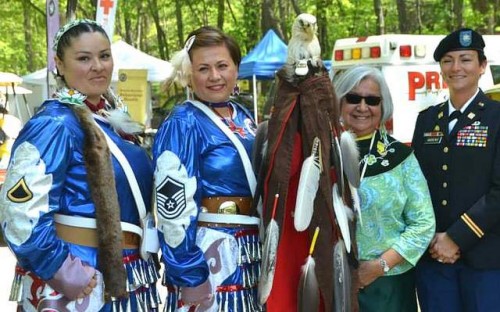
By Mallory Black , Medill News Service
Even with a family military background dating back to World War I, Shenandoah Ellis-Ulmer never considered while growing up that serving in the military might be the right choice for her, too.
But that changed in her sophomore year in college after she was placed on academic probation at the University of Minnesota — what she now says was a much-needed wakeup call to spur her to seek more purpose and direction.
Still unclear, though, was exactly what purpose she should pursue and what direction she should take.
Then she recalled overhearing two classmates in the National Guard talk about the opportunities that had opened up to them after enlisting.
And for Ellis-Ulmer, there was that purpose and direction.
Nearly 20 years later, Air Force Master Sgt. Shenandoah Ellis-Ulmer, now 40, is an intelligence analyst at Fairchild Air Force Base in Spokane, Washington.
She’s also a member of the Sisseton Wahpeton Oyate of the Lake Traverse Reservation in South Dakota, the first woman in her family to serve in the military and just one of thousands of Native Americans who are serving or have served their country in uniform.
Ellis-Ulmer, who has served in South Korea and the Middle East in addition to her various stateside assignments, said serving in the Air Force “has given my children, my husband and myself a different outlook on the world.”
“I want to give my children a different perspective on life because life is not what the reservation is,” she said. “Life is what you make of it.”
A tradition of service
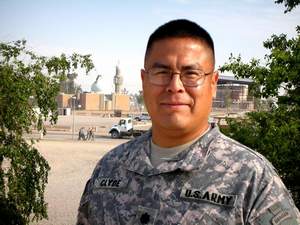
The Defense Department reports a total of 27,186 American Indian and Alaska Native active-duty officers and reserves, and the Veterans Affairs Department reports more than 156,000 Native American veterans. They have served in every war in American history, and 25 have have received the nation’s highest award for valor, the Medal of Honor.
At least 70 Native American and Alaska Natives have died during combat operations in Iraq and Afghanistan, and 513 others were wounded in those combat zones.
Native Americans traditionally have had a strong military presence because they have a strong sense of patriotism, said Clara Platte, executive director of the Navajo Nation Washington office.
“There’s a deep tie to the land and our people and our culture, and being able to serve in the military is a way to honor that heritage,” Platte said.
But that doesn’t mean the cultural transition from “Indian Country” to military base is always easy.
Army Lt. Col. Tracey Clyde, 47, a member of the Navajo tribe, spent most of his childhood with his grandparents herding sheep near the Sweetwater Chapter on the Navajo Nation reservation in New Mexico.
In high school, Clyde decided to set his sights on attending the U.S. Military Academy at West Point, New York.
But once there, he soon realized that adapting to the social norms might be a challenge — even in simple things like the slang cadets might use to greet each other.
“One of the things that I had to keep from getting mad at was when they talk to each other and sometimes say, ‘Hey chief,’ ” Clyde said. “That’s one thing I got mad at my roommate for, but then I noticed other cadets my age were saying the same thing to each other.”
Clyde quickly figured out the greeting wasn’t meant to be derogatory and found his footing as an Army officer. Then while he was stationed in Seoul, South Korea, his Native American culture found him again.
A fellow officer who was also Navajo told him that her baby had just laughed for the first time. Navajos traditionally celebrate a baby’s first laugh, so Clyde and other Native Americans on their base held a ceremony, asking for the baby to be blessed by generosity and kindness.
“All Native Americans — whether they were Navajo or not — met in her apartment and we had our ‘first laugh’ party,” said Clyde, now assigned to the Army Human Resources Command at Fort Knox, Kentucky. “Even though we were far away from our homelands, we still took the opportunity to continue our culture regardless of where we were stationed.”
Throughout his 25 years in uniform, Clyde has taken every opportunity to help other Native Americans adjust to life in the military, so “they’re not so culturally shocked with all the stuff they’re thrown into.”
An honorable life
Ellis-Ulmer, who has deployed 15 times to the Middle East, said that for her, and for most Native Americans, serving in the military is considered an honorable life.
A survivor of childhood sex abuse and domestic violence as an adult, Ellis-Ulmer does her part to help other Native American women who have lived that life.
As a member of the Native American Women Warriors, an all-women color guard that supports Native American female veterans dealing with homelessness, sexual assault trauma and the transition back to civilian life, Ellis-Ulmer regularly speaks at powwows and community events to raise awareness of veteran issues.
“I don’t think I’ve come across one Native woman who has said that they were not abused, whether it was by their husbands, their partners or their family members,” Ellis-Ulmer said. “Dealing with all these violent acts against Native women is my motivation because I don’t want this mentality of abuse to perpetuate.”
As a way to show her appreciation for what the Air Force has done for her, Ellis-Ulmer speaks about military life as part of the We Are All Recruiters program, which allows active-duty members to recruit for the Air Force in their own communities.
Recently the Santee Sioux tribe honored her for her military service with a golden eagle tail feather.
“They told me to wear it turned down,” she explained, “Because now I’m a warrior to them.”
Sioux reservation has mixed feelings about Obama’s visit
Obama visits to address education, economy; tribal leaders use opportunity to voice opposition to Keystone pipeline
President Barack Obama made his first presidential visit to Indian Country on Friday – and some residents of the Sioux reservation used the opportunity to voice their opposition to a proposed pipeline that would carry tar sands oil through their land.
The president and first lady arrived by helicopter at the Standing Rock Sioux Reservation, which straddles the border between North Dakota and South Dakota. Native Americans, some dressed in full feathered headdresses and multicolored, beaded outfits, greeted the couple.
“We can follow the lead of Standing Rock’s most famous resident, Chief Sitting Bull. He said, ‘Let’s put our minds together to see what we can build for our children,” Obama said. Sitting Bull was a Sioux chief who defeated Gen. George Custer at the 1876 Battle of the Little Bighorn.
The Obamas also spoke privately with tribal youth about their challenges growing up on the 2.3 million-acre reservation, home to nearly 1,000 residents who struggle with a lack of housing, health care, education and economic opportunity.
Some Sioux leaders used the visit to tell Obama that the proposed Keystone XL pipeline — which would run through their land — would be a treaty violation.
Bryan Brewer, president of the Ogalala Sioux Tribe, said in a statement that the Keystone pipeline was “a death warrant for our people,” and that it would violate treaty rights. Critics of the pipeline warn of possible oil spills, environmental impact from the line’s construction, and Keystone’s overall effect on raising carbo
NCAI Applauds President Obama’s Historic Visit to Indian Country
Obama Visits Indian Country in ND, Follow Along With ICTMN’s Twitter
On Friday the 13th, President Barack Obama will be visiting tribal Leaders and other tribal members during his visit to the Standing Rock Sioux Indian Reservation. In light of this historic day, we know that you in Indian country will be there in person or spirit.
We want to hear from you tomorrow on Twitter.
So, if you want to join us or tweet to us, correspondent @VinceSchilling will be listening and tweeting live from our @IndianCountry twitter account. All day long, we are asking for your comments, pictures, thoughts and tweets.
We will be tweeting using the #PrezRezVisit hashtag.
So whether you are on site in North Dakota, watching coverage in Alaska or Florida or blogging from San Francisco, ICTMN wants to hear your thoughts and see your pictures from the day. We will be retweeting you and might include among the day’s best tweets in our follow up article.
Remember, use the #PrezRezVisit hashtag.
Read more at http://indiancountrytodaymedianetwork.com/2014/06/12/obama-visits-indian-country-nd-follow-along-ictmns-twitter-155277
On My Upcoming Trip to Indian Country
Six years ago, I made my first trip to Indian country. I visited the Crow Nation in Montana—an experience I’ll never forget. I left with a new Crow name, an adoptive Crow family, and an even stronger commitment to build a future that honors old traditions and welcomes every Native American into the American Dream.
Next week, I’ll return to Indian country, when Michelle and I visit the Standing Rock Sioux Tribe in Cannonball, North Dakota. We’re eager to visit this reservation, which holds a special place in American history as the home of Chief Sitting Bull. And while we’re there, I’ll announce the next steps my Administration will take to support jobs, education, and self-determination in Indian country.
As president, I’ve worked closely with tribal leaders, and I’ve benefited greatly from their knowledge and guidance. That’s why I created the White House Council on Native American Affairs—to make sure that kind of partnership is happening across the federal government. And every year, I host the White House Tribal Nations Conference, where leaders from every federally recognized tribe are invited to meet with members of my Administration. Today, honoring the nation-to-nation relationship with Indian country isn’t the exception; it’s the rule. And we have a lot to show for it.
Together, we’ve strengthened justice and tribal sovereignty. We reauthorized the Violence Against Women Act, giving tribes the power to prosecute people who commit domestic violence in Indian country, whether they’re Native American or not. I signed the Tribal Law and Order Act, which strengthened the power of tribal courts to hand down appropriate criminal sentences. And I signed changes to the Stafford Act to let tribes directly request disaster assistance, because when disasters strike, you shouldn’t have to wait for a middleman to get the help you need.
Together, we’ve resolved longstanding disputes. We settled a discrimination suit by Native American farmers and ranchers, and we’ve taken steps to make sure that all federal farm loan programs are fair to Native Americans from now on. And I signed into law the Claims Resolution Act, which included the historic Cobell settlement, making right years of neglect by the Department of the Interior and leading to the establishment of the Land Buy-Back Program to consolidate Indian lands and restore them to tribal trust lands.
Together, we’ve increased Native Americans’ access to quality, affordable health care. One of the reasons I fought so hard to pass the Affordable Care Act is that it permanently reauthorized the Indian Health Care Improvement Act, which provides care to many in tribal communities. And under the Affordable Care Act, Native Americans across the country now have access to comprehensive, affordable coverage, some for the first time.
Together, we’ve worked to expand opportunity. My Administration has built roads and high-speed internet to connect tribal communities to the broader economy. We’ve made major investments in job training and tribal colleges and universities. We’ve tripled oil and gas revenues on tribal lands, creating jobs and helping the United States become more energy independent. And we’re working with tribes to get more renewable energy projects up and running, so tribal lands can be a source of renewable energy and the good local jobs that come with it.
We can be proud of the progress we’ve made together. But we need to do more, especially on jobs and education. Native Americans face poverty rates far higher than the national average – nearly 60 percent in some places. And the dropout rate of Native American students is nearly twice the national rate. These numbers are a moral call to action. As long as I have the honor of serving as President, I’ll do everything I can to answer that call.
That’s what my trip next week is all about. I’m going to hear from as many people as possible—ranging from young people to tribal leaders—about the successes and challenges they face every day. And I’ll announce new initiatives to expand opportunity in Indian country by growing tribal economies and improving Indian education.
As I’ve said before, the history of the United States and tribal nations is filled with broken promises. But I believe that during my Administration, we’ve turned a corner together. We’re writing a new chapter in our history—one in which agreements are upheld, tribal sovereignty is respected, and every American Indian and Alaskan Native who works hard has the chance to get ahead. That’s the promise of the American Dream. And that’s what I’m working for every day—in every village, every city, every reservation—for every single American.
Read more at http://indiancountrytodaymedianetwork.com/2014/06/05/my-upcoming-trip-indian-country







